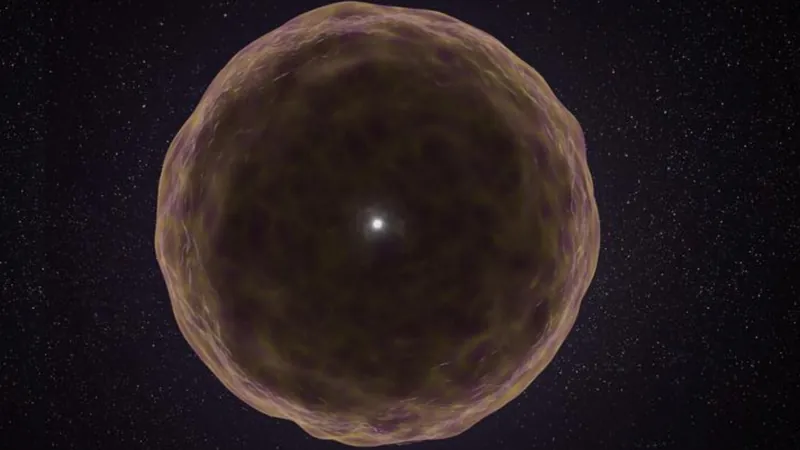
Astronomers Unveil Shocking New Type of Supernova with Unprecedented Insights
2025-08-21
Author: Emma
A Cosmic Revelation
In a groundbreaking discovery, astronomers have detected a bizarre new type of supernova, offering a unique glimpse into the life and death of massive stars. This extreme event, dubbed SN2021yfj, was identified 2.2 billion light-years from Earth and is unlike anything scientists have encountered before.
Stripped to the Core
Unlike typical supernovas, where lighter elements like hydrogen and helium dominate the observable spectrum, SN2021yfj revealed heavier elements such as silicon, sulfur, and argon. Team leader Steve Schulze from Northwestern University remarked, "This is the first time we have seen a star that was essentially stripped to the bone." This suggests that the progenitor star lost its outer layers, revealing inner layers before its explosive end.
Rethinking Stellar Evolution
This discovery challenges existing models of star life cycles. Traditionally, astrophysicists imagined stars as having layers akin to an onion, with lighter elements on the outside. SN2021yfj, however, implies that massive stars can shed their outer layers entirely while still producing spectacular explosions.
A Unique Cosmic Event
Initially observed by the Zwicky Transient Facility in September 2021, SN2021yfj's findings led to the conclusion that current stellar evolution theories might not capture the full spectrum of stellar deaths.
A New Era of Discovery
"This star is telling us that our ideas on stellar evolution are far too narrow," said researcher Adam Miller. This unusual supernova highlights the potential for more exotic pathways in the final moments of massive stars.
How Does It Happen?
Supernova progenitor stars are typically 10 to 100 times the mass of our Sun, fusing lighter elements until they eventually collapse into an iron core. The core’s collapse leads to a supernova, explosively shedding the outer layers.
Spectroscopy: The Key to Understanding
Using spectroscopy at the W.M. Keck Observatory in Hawaii, astronomers successfully mapped the elements present in SN2021yfj. After an unexpected breakthrough from a UC Berkeley colleague, researchers grasped they were witnessing something unprecedented.
Revealing Layers of the Star
SN2021yfj's observable spectrum was dominated by heavy elements. Unlike past observations that revealed lighter elements alone, this supernova showcased material that had formed just months before its explosive finale, hinting at a violent prelude to the event.
The Mystery Behind the Explosive Death
What triggered this remarkable supernova? Possible explanations range from intense stellar winds to companion stars stripping outer materials away. However, the leading theory suggests that multiple episodes of "pair instability" ignited fierce bursts of energy, effectively tearing the star apart.
The Call for More Discoveries
With only one example of such a phenomenon known, scientists emphasize the need for further observations. As Miller put it, "This star really underscores the need to uncover more of these rare supernovae to better understand their nature and how they form."









 Brasil (PT)
Brasil (PT)
 Canada (EN)
Canada (EN)
 Chile (ES)
Chile (ES)
 Česko (CS)
Česko (CS)
 대한민국 (KO)
대한민국 (KO)
 España (ES)
España (ES)
 France (FR)
France (FR)
 Hong Kong (EN)
Hong Kong (EN)
 Italia (IT)
Italia (IT)
 日本 (JA)
日本 (JA)
 Magyarország (HU)
Magyarország (HU)
 Norge (NO)
Norge (NO)
 Polska (PL)
Polska (PL)
 Schweiz (DE)
Schweiz (DE)
 Singapore (EN)
Singapore (EN)
 Sverige (SV)
Sverige (SV)
 Suomi (FI)
Suomi (FI)
 Türkiye (TR)
Türkiye (TR)
 الإمارات العربية المتحدة (AR)
الإمارات العربية المتحدة (AR)